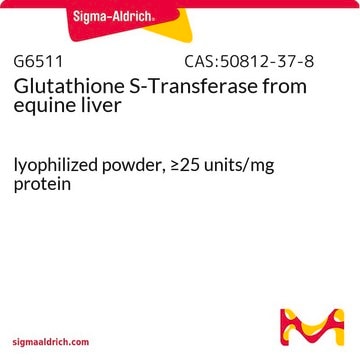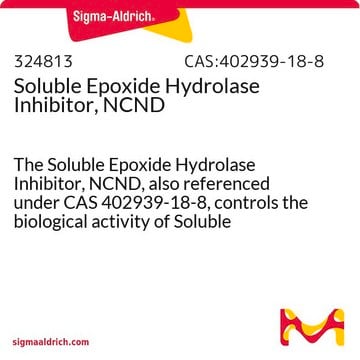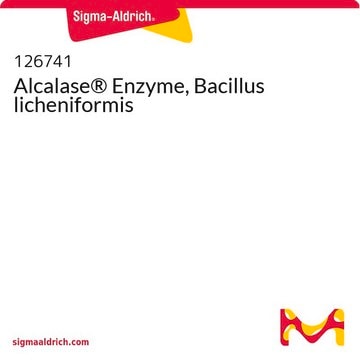おすすめの製品
形状
lyophilized powder
比活性
≥0.2 U/g
色
beige
保管温度
2-8°C
生物化学的/生理学的作用
エポキシド加水分解酵素は、エポキシドの加水分解速度論的分割を行うエナンチオ選択的触媒です。
単位の定義
1 unitは、pH 8.0、25°C、1分間で、1 μmolの(S)-NEPC[(2S,3S)-trans-3-フェニル-2-オキシラニルメチル-4-ニトロフェニルカルボナート、製品番号04088]を加水分解する酵素量に相当します。
その他情報
エポシキドの光学活性ジオ-ルへの不斉加水分解
シグナルワード
Danger
危険有害性情報
危険有害性の分類
Resp. Sens. 1
保管分類コード
11 - Combustible Solids
WGK
WGK 1
引火点(°F)
Not applicable
引火点(℃)
Not applicable
個人用保護具 (PPE)
Eyeshields, Gloves, type N95 (US)
試験成績書(COA)
製品のロット番号・バッチ番号を入力して、試験成績書(COA) を検索できます。ロット番号・バッチ番号は、製品ラベルに「Lot」または「Batch」に続いて記載されています。
Hechtberger, P.
Tetrahedron Asymmetry, 4, 1161-1161 (1993)
Mischitz, M., et al.
Tetrahedron Asymmetry, 7, 2041-2041 (1996)
E N Jacobsen
Accounts of chemical research, 33(6), 421-431 (2000-07-13)
The discovery of the metal salen-catalyzed asymmetric ring-opening (ARO) of epoxides is chronicled. A screening approach was adopted for the identification of catalysts for the addition of TMSN(3) to meso-epoxides, and the chiral (salen)CrN(3) complex was identified as optimal. Kinetic
Zhuo Shao et al.
Arteriosclerosis, thrombosis, and vascular biology, 34(3), 581-586 (2014-01-25)
Regulation of angiogenesis is critical for many diseases. Specifically, pathological retinal neovascularization, a major cause of blindness, is suppressed with dietary ω3-long-chain polyunsaturated fatty acids (ω3LCPUFAs) through antiangiogenic metabolites of cyclooxygenase and lipoxygenase. Cytochrome P450 epoxygenases (CYP2C8) also metabolize LCPUFAs
Ana W Y Cheong et al.
Biology of reproduction, 81(1), 126-132 (2009-03-27)
Somatic cell-embryo coculture enhances embryo development in vitro by producing embryotrophic factor(s) and/or removing harmful substances from the culture environment. Yet, the underlying molecular mechanisms on how somatic cells remove the toxicants from the culture medium remain largely unknown. By
ライフサイエンス、有機合成、材料科学、クロマトグラフィー、分析など、あらゆる分野の研究に経験のあるメンバーがおります。.
製品に関するお問い合わせはこちら(テクニカルサービス)







